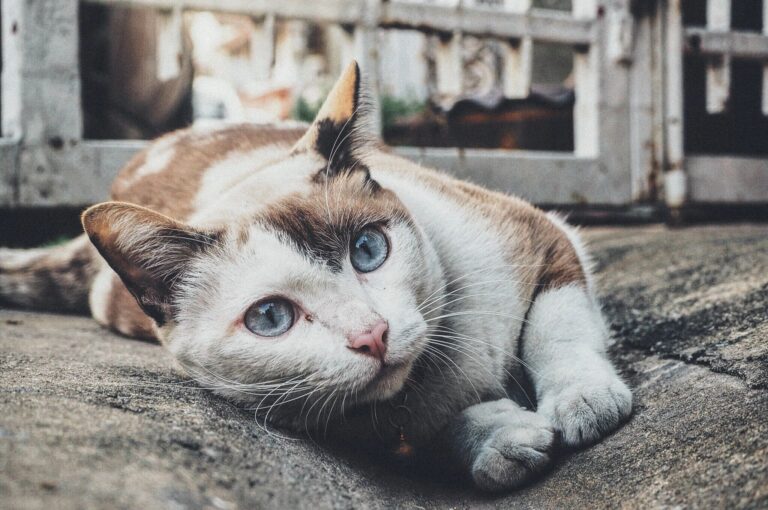Raw Diets for Pets: Exploring Myths and Facts
Raw pet diets have become increasingly popular, with many pet owners believing that raw meat, bones, fruits, and vegetables provide superior nutrition. Proponents argue that these diets mimic what animals eat in the wild, offering health benefits that commercial pet foods cannot match. However, numerous myths surround raw diets, making examining the evidence and understanding the reality behind these claims crucial.
Raw Diets for Pets
One of the most common beliefs is that raw diets offer superior nutrition to commercial pet foods. This myth is rooted in the idea that raw, unprocessed foods are inherently healthier. However, studies have shown that this is only sometimes the case. For instance, a Freeman et al. (2013) study found no significant nutritional advantage of raw diets over commercial pet foods. Moreover, metabolomic analyses indicate potential nutrient imbalances in raw diets. Shmalberg (2017) highlighted that many raw diets lack essential nutrients, which can lead to deficiencies and health issues in pets. Therefore, while raw diets may seem natural, they do not consistently provide superior nutrition to well-formulated commercial diets.
Mimicking a Pet’s Natural Diet
Another prevalent myth is that raw diets mimic a pet’s natural diet in the wild, providing the nutrients they are evolutionarily designed to consume. However, domesticated pets have evolved differently from their wild counterparts. Research by Bradshaw et al. (2013) shows that domesticated dogs and cats have adapted to diets that differ significantly from those of their wild ancestors. Additionally, orthomolecular studies suggest that domesticated pets do not benefit from raw diets in the same way that wild animals do. Lonsdale (2001) found that domesticated animals have different nutritional requirements and thrive on diets explicitly designed for their needs. Thus, the evolutionary history of pets indicates that they do not necessarily benefit from diets that mimic wild feeding patterns.
Safety of Raw Diets
Safety is a significant concern with raw diets. Many pet owners believe that raw diets are safe and free from harmful pathogens, but the evidence contradicts this belief. Numerous studies have found dangerous bacteria such as Salmonella and E. coli in raw diets. Weese et al. (2005) conducted a survey revealing these pathogens’ presence in many commercially available raw pet foods. Furthermore, functional nutritional research highlights the health risks of feeding raw diets to pets and humans. Stiver et al. (2011) reported that handling and feeding raw diets can expose pets and their owners to dangerous bacteria, leading to serious health issues. Therefore, raw diets pose significant safety concerns due to pathogens, risking both pet and human health.
Improving Pet Digestion with Raw Diets
Many proponents of raw diets claim that these diets improve pet digestion. However, studies show no consistent improvement in digestive health with raw diets. Bauer et al. (2014) found that pets on raw diets did not show significant differences in digestion compared to those on commercial diets. Additionally, metabolomic research indicates the potential for digestive issues with raw diets, including an imbalance of gut microbiota. Schmidt et al. (2018) demonstrated that raw diets could disrupt the natural balance of gut bacteria, potentially leading to digestive problems. As such, insufficient evidence supports claims that raw diets improve digestion in pets.
Raw Diets and Dental Health
The belief that raw diets promote better dental health is another myth that needs more scientific backing. Orthomolecular studies have found no clear benefits of raw diets on dental health. Dodd et al. (2018) investigated the impact of raw diets on dental health and found no significant differences compared to other types of pet food. Additionally, functional nutritional research highlights that raw diets do not prevent dental disease better than other diets. Finch et al. (2019) reported that dental health in pets fed raw diets was not better than that of pets fed different types of food. Therefore, raw diets do not have proven advantages for dental health over other pet diets.
Conclusion
In conclusion, while raw diets for pets may seem appealing due to their natural and unprocessed nature, the evidence only supports some of the claims made by their proponents. Raw diets do not consistently offer superior nutrition, mimic a pet’s natural diet, ensure safety from pathogens, improve digestion, or promote better dental health. Pet owners must rely on evidence-based information when making pet dietary choices. Consulting with veterinarians and considering well-formulated commercial diets can help ensure that pets receive the nutrition they need for a healthy and happy life.
References
- Bradshaw, J., Goodwin, D., Legrand-Defrétin, V., & Nott, H. M. (2013). Domestication: Evolutionary effects on the canine brain.
- Dodd, S., Cave, N., Adolphe, J., Shoveller, A. K., & Verbrugghe, A. (2018). The impact of raw diets on dental health in pets.
- Finch, N. C., Syme, H. M., & Elliott, J. (2019). Functional nutrition and its effects on pet dental health.
- Freeman, L. M., Chandler, M. L., Hamper, B. A., & Weeth, L. P. (2013). Nutritional adequacy of commercial raw food diets.
- Lonsdale, T. (2001). Orthomolecular study on the dietary needs of domesticated animals.
- Schmidt, M., Unterer, S., Suchodolski, J. S., Honneffer, J., Guard, B., Lidbury, J., Steiner, J. M., & Fritz, J. (2018). Metabolomic impact of raw diets on pet gut health.
- Shmalberg, J. (2017). Metabolomic analysis of commercial raw pet diets.
- Stiver, S. L., Frazier, K. S., Mauel, M. J., & Styer, E. L. (2011). Health risks associated with raw diets in pets.
- Weese, J. S., Rousseau, J., & Arroyo, L. (2005). Prevalence of pathogens in raw pet foods.







